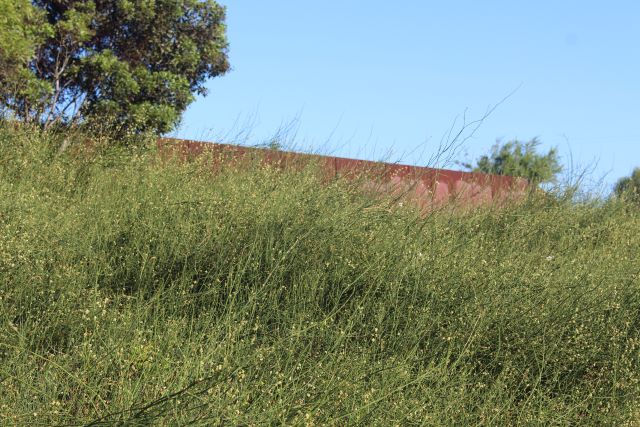
Protest in Port
A corten steel wall on Todd Rd marks the boundary between the Port of Melbourne and Port Melbourne. It contains the Port and protects its neighbours from the intrusion of noise and Port activity. The wall was built as part of the Port Capacity project in 2014.
As part of the project, access to the Port at Williamstown Rd was cut at Todd Rd, much to the relief of residents who had long borne the brunt of Port traffic. Drivers waiting for the lights at Williamstown Rd now face a gate into the Port. The gate is only rarely used for over-size vehicles that cannot access the Port any other way.
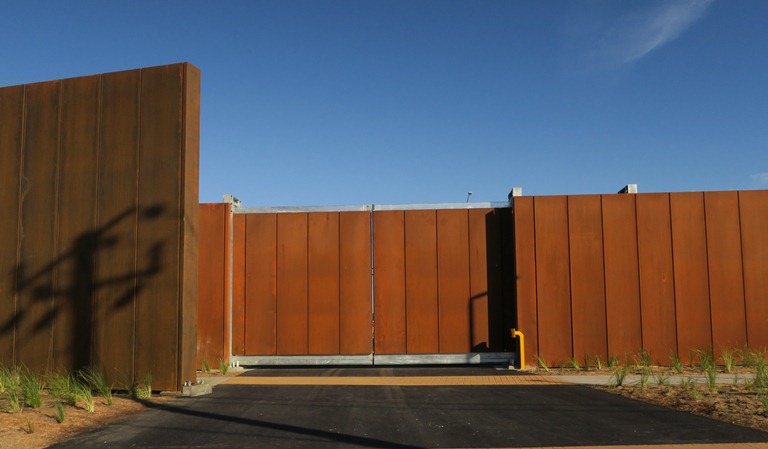
Last week, on 22 January, this place was the flashpoint for a clash between police and people protesting the arrival of the container ship ZIM Ganges at the Victoria International Container Terminal (VICT). ZIM is a shipping company that is controlled and partly owned by the Israeli government. The blockade against the berthing, loading and unloading of the ship had been underway for several days. Free Palestine Melbourne had been joined at the picket by Unionists for Palestine (U4P), First Nations groups and Melburnians deeply concerned about the deepening humanitarian crisis in Gaza. Port workers chose not to cross the picket line even though offered police escort. Two other container vessels as well as the Ganges were held up by the protest.
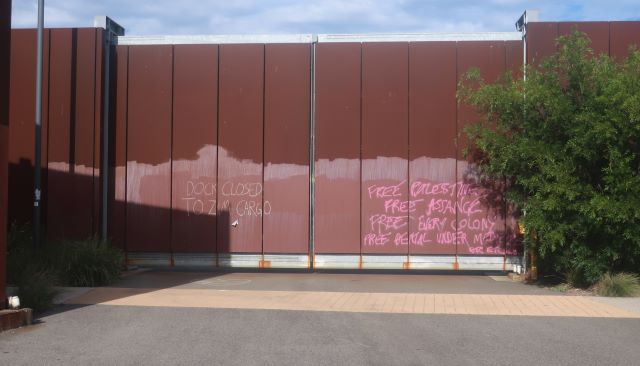
ZIM Ganges finally accessed a berth at VICT and is now en route to the Port of Brisbane.
The trade union movement situated the protest in the long history of trade union support for international social justice campaigns, most notably the campaign against apartheid. As noted on the Australians Trade Union website, these actions were far from popular and hugely controversial at the time.1
When Nelson Mandela addressed a crowd at Melbourne Town Hall in October 1990, not long after his release from prison, he made a point of thanking unions for their support in the struggle against apartheid.
“I well remember that the labour movement of this country [Australia] was among the very first, if not the first, to take solidarity action in line with the people of South Africa in the course of their struggle. It was the labour movement of this country, in the early 50s, which supported – the dockworkers in this country, who refused to unload South African ships. That was a decision that created a great deal of excitement. Which gave the people of South Africa in their struggle a lot of strength, and a lot of hope. It was difficult to understand how workers, thousands of miles from our shores, could take the initiative, the lead, among the workers of the world to pledge their solidarity with the people of South Africa. The feeling that we are not alone, that we have millions of workers behind us is a factor which has propelled us, not withstanding, the most brutal form of oppression which we face in our country.” 2
South Africa has been a long standing supporter of the “Block the Boat” – a campaign to deny ZIM ships access to ports around the world.
On 29 December, South Africa instituted proceedings at the International Court of Justice (ICJ) against Israel concerning alleged violations in the Gaza Strip of obligations under the Convention on the Prevention and Punishment of the Crime of Genocide.
On 26 January, the ICJ in its interim ruling ordered six provisional measures, including for Israel to take all measures to prevent genocidal acts, prevent and punish the direct and public incitement to genocide, and take immediate and effective steps to ensure the provision of humanitarian assistance to civilians in Gaza.
The court also called for the immediate and unconditional release of the hostages taken by Hamas on 7 October.
While some people say the provisional orders will make no difference in the intractable conflict, the moral authority of the court has weight and force.
After the blockade, the Port has resumed its rhythm. The autonomous cranes whirr quietly while trucks enter and leave the Port interrupted only by the traffic light sequence. The slogans have been painted over – for now.
I’ve got a sense this won’t be the last protest at Webb Dock.
Where is this place?
1 Todd Rd x Williamstown Rd, Port Melbourne, where police and protesters clashed
2 Sandridge Beach, where protestors gathered after being moved on by police
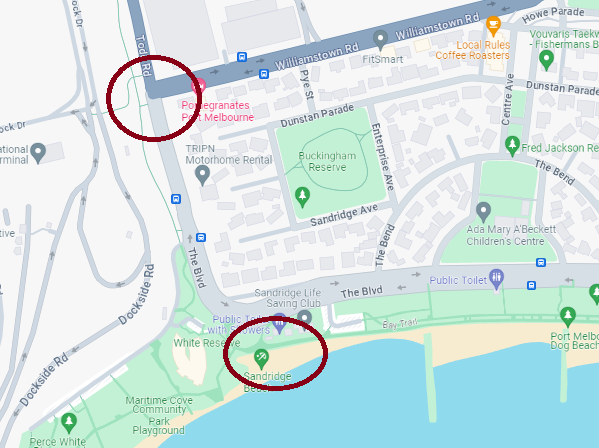
Sources
1 ACTU Institute Australian Trade Union Institute Why Nelson Mandela thanked the Australian union movement October 25, 2021
2 Listen to Nelson Mandela’s saying those words from the video embedded in the site above
3 Read the ICJ’s Order of 26 January 2024 directly from the ICJ website. It is more readable and accessible than you might think.
4 Comments
-
-
Trish
The police have just broken up another protest at the dock. I heard some huge bangs. Apparently the police fired tear gas and we using rubber bullets on the protesters.

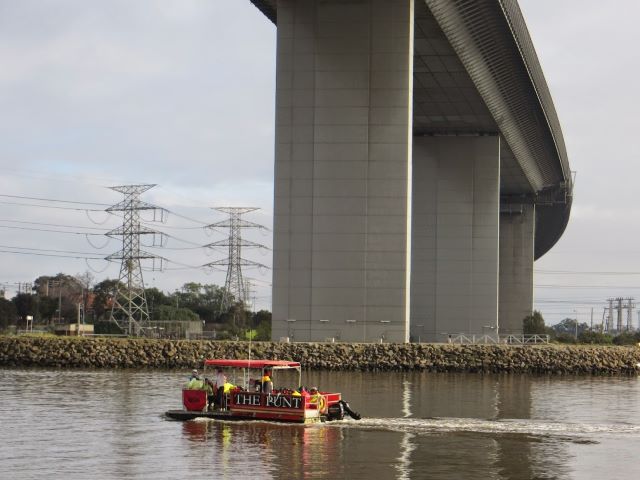
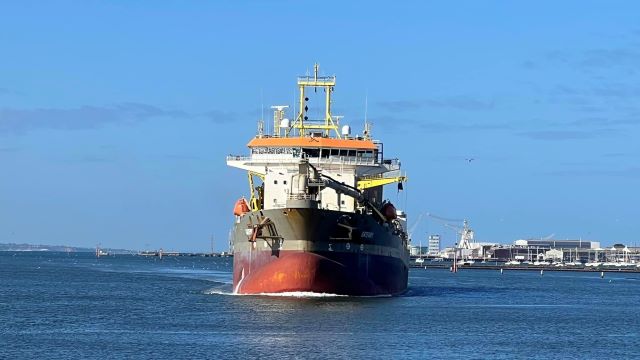
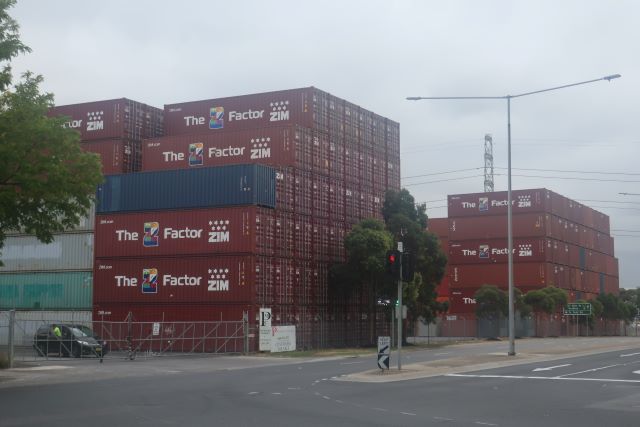
Heather Wheat
Janet I like the symbolism you talk about between the tangled lignum and our deep entanglement with global issues. You have to look very close to see the beauty of the tiny wee flowers on this otherwise not very attractive plant. The plant is very interesting on a number of levels. It survives in arid parts of inland Australia near occasional wetland area where other plants may not survive. It provides a safe refuge for small birds. Interestingly I discovered that during the period when ‘Government officials’ took children from their aboriginal parents, the people used to hide themselves and their children in the dense tangle of these plants so the police couldn’t find them. Another link to trauma and human terror.